There are many different algorithms in computational electromagnetics, such as FDTD, FDD, finite element method (FE), moment method (MoM), boundary element method (BEM), Spectral domain method (SM), transmission line method (TLM), pattern matching method (MM), lateral resonance method (TRM), line method (ML), and analytical method, and the like.
In the frequency domain, the numerical algorithms are: FEM - Finite Element Method, MoM - Method of Moments, FDM - Finite Difference Methods, BEM - Boundary Element Method , and Transmission Line Method (TLM - Transmission-Line-matrix Method).
Among these methods are analytical methods, semi-analytical methods, and numerical methods. The numerical methods are divided into zero-order, first-order, second-order and high-order methods. According to the accuracy of the results from high to low, are: high order, second order, first order and zero order.
According to the degree of analysis from low to high, in order: FDTD, transmission line method (TLM), time domain finite integration method (FITD), finite element method (FEM), moment method (MoM), Line method (ML), boundary element method (BEM), spectral domain method (SM), pattern matching method (MM), lateral resonance method (TRM), and analytical method.
According to the accuracy of the results from high to low, are: analytical method, semi-analytical method, numerical method.
The pattern matching method (MM) is a semi-analytical method, provided that the transverse mode of the transmission line is accurately available. In theory, the pattern can be a continuum. However, due to the limitation of numerical solution accuracy, the transverse mode is usually required to be a discrete spectrum. This requires horizontal structure to be lossless. More generally speaking, it is a lossless waveguide structure. In other words, MM is most suitable for waveguide cavities, high Q and has a certain uniformity in a certain dimension of energy transfer. For example, it is suitable for the analysis of the coupling of two cylindrical cavities in height dimension, but it is not suitable for the coupling analysis between two hoists, because the latter does not have a very clear mode to participate in energy exchange, and people can only use a large number of modes. And consider this, which reduces the utility of MM.
The finite element method (FEM) is a first-order pure numerical method (if a first-order element is used). It is suitable for any shape structure and is a versatile method. But things are always divided into two. In general, general methods are not as efficient as special methods in specific application areas. For high Q cavity filter designs, MM is far superior to FEM.
Microwave EDA software using Momo method is ADS, Sonnet, ANSYS Designer, Microwave Office, Zeland IE3D, ANSYS Esemble, Super NEC and FEKO; microwave EDA software using finite element method (FEM) is HFSS and ANSYS; The microwave EDA software for time domain finite difference method (FDTD) has EMPIRE and XFDTD, and the microwave EDA software with limited integration method (FITD) has CST Microwave Studio.
Analysis of mainstream electromagnetic field simulation softwareADS
ADS - Advanced Design System, Agilent's microwave circuit and communication system simulation software, is one of the most used software in universities and research institutes in China. Its function is very powerful, and its simulation methods are rich and varied. It can realize various simulation analysis methods including time domain and frequency domain, digital and analog, linear and nonlinear, noise, etc., and can analyze and optimize the yield of design results. It improves the design efficiency of complex circuits and is an excellent design tool for microwave circuit and system signal links. Mainly used in: RF and microwave circuit design, communication system design, DSP design and vector simulation.
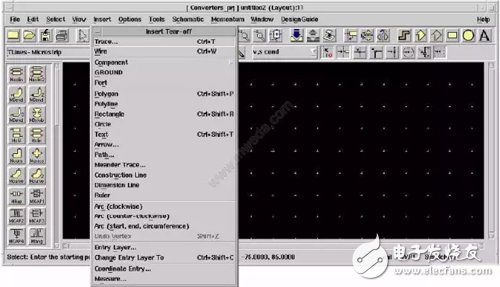
ANSYS' microwave system and communication system simulation software; it uses the latest window technology and is the first design tool to seamlessly integrate high frequency circuitry, layout and electromagnetic field simulation tools into the same environment. Rather than simplicity and interface integration, the key is ANSYS Designer's unique "on demand solution" technology, which allows you to select solvers as needed to achieve complete control over the design process.
ANSYS Designer implements the "what you see is what you get" automated layout feature, the layout and schematic automatically synchronize, greatly improving the layout design efficiency. At the same time, Ansys can be easily integrated with other design software and can be connected to test instruments to perform various design tasks such as frequency synthesizers, phase-locked loops, communication systems, radar systems, amplifiers, mixers, and filters. , phase shifters, power splitters, synthesizers, and microstrip antennas. Mainly used in: RF and microwave circuit design, communication system design, circuit board and module design, component design.
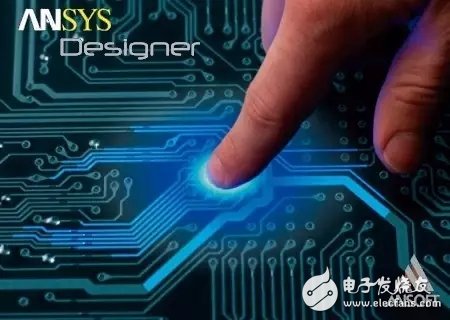
ANSYS's 3D electromagnetic simulation software; is the world's first commercial 3D electromagnetic field simulation software, the industry recognized industry standard for 3D electromagnetic field design and analysis. HFSS provides a simple and intuitive user design interface, a precision adaptive field solver, and a powerful post-processor with unprecedented electrical performance analysis capabilities to calculate S-parameters and full-wave electromagnetic fields in arbitrarily shaped 3D passive structures. HFSS software has a powerful antenna design function that calculates antenna parameters such as gain, directionality, far-field pattern profile, far-field 3D map and 3dB bandwidth; plots polarization characteristics, including spherical field components, circularly polarized field components Ludwig third defines the field component and the axial ratio. With HFSS, you can calculate:
1 basic electromagnetic field numerical solution and open boundary problem, near-far field radiation problem;
2-port characteristic impedance and transmission constant;
3S parameters and normalized S parameters of corresponding åŸ impedance;
4 eigenmode or resonant solution of the structure. Moreover, the Ansys high-frequency solution consisting of ANSYS HFSS and ANSYSDesigner is the only high-frequency design solution based on physical prototypes, providing fast and accurate design methods from system to circuit to component level, covering high All aspects of frequency design.
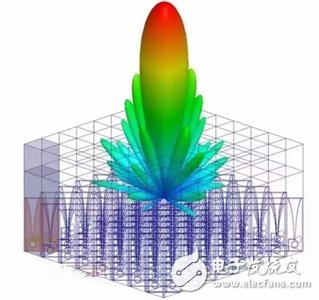
AWR's microwave EDA software provides the most complete, fastest and most accurate solution for microwave planar circuit design. It simulates and simulates the microwave planar circuit through two simulators. For a circuit composed of lumped components, it is relatively easy to use a circuit method; the software has a "VoltaireXL" simulator to deal with the microwave planar circuit problem of the lumped components.
For the distributed parameter microwave planar circuit composed of specific microstrip geometry, the field method is more effective; the software uses the "EMSight" simulator to deal with the problem of the three-dimensional electromagnetic field of any multi-layer planar structure. The "VoltaireXL" emulator has a component library that can be used to set up the components used in the microwave circuit. The passive components include inductors, resistors, capacitors, resonant circuits, microstrip lines, strip lines, and coaxial. Lines and the like, nonlinear devices have bipolar transistors, field effect transistors, diodes, and the like.
The “EMSight†simulator is a 3D electromagnetic field simulation package that can be used for the analysis of planar high frequency circuits and antenna structures. The feature is the combination of the modified spectral domain method and the intuitive window graphical user interface (GUI) technology, which makes the calculation speed much faster. MWO can analyze the electrical characteristics of circuits such as radio frequency integrated circuits (RFICs), microwave monolithic integrated circuits (MMICs), microstrip patch antennas, and high-speed printed circuits (PCBs).
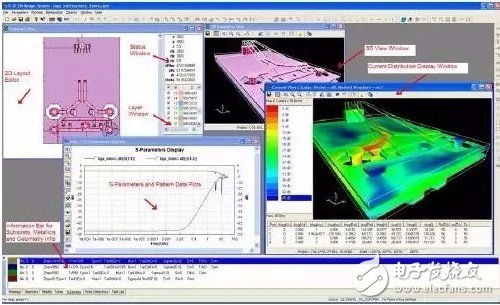
It is a three-dimensional full-wave electromagnetic field simulation software based on time domain finite difference method (FDTD) introduced by Remcom. The XFDTD user interface is friendly and computationally accurate; however, XFDTD itself has no optimization function and must be optimized by third-party software Engineous. The software was first used to simulate cellular phones, longer than cell phone antennas and SAR computing. It is now widely used in wireless, microwave circuits, radar scatter calculations, chemical, optical, land-based warning radars and biological tissue simulation.
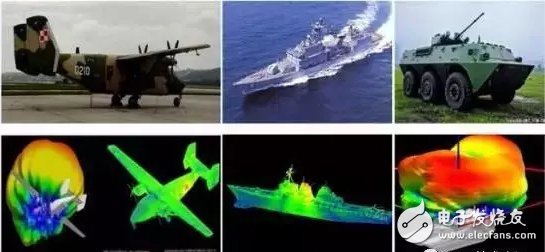
IE3D is an electromagnetic field simulation tool based on the moment method, which can solve the current distribution problem of three-dimensional metal structures in a multi-layer medium environment.
IE3D can be divided into three parts: MGRID, MODUA and PATTERNVIEW. MGRID is the pre-processing suite of IE3D. It has functions of establishing circuit structure, setting substrate and metal materials and setting simulation parameters. MOODUA is the core execution kit of IE3D. Perform simulation calculation of electromagnetic field, performance parameters (Smith Park, S parameters, etc.) calculation and execution parameter optimization calculation; PATTERNVIEW is a post-processing suite of IE3D, which can simulate the calculation result, the distribution of electromagnetic field in contour or vector field The form is displayed.
IE3D simulation results include S, Y, Z parameters, VWSR, RLC equivalent circuit, current distribution, near-field distribution and radiation pattern, directionality, efficiency and RCS; the application range is mainly in microwave RF circuits, multilayer printed circuits Analysis and design of board and planar microstrip antenna design.
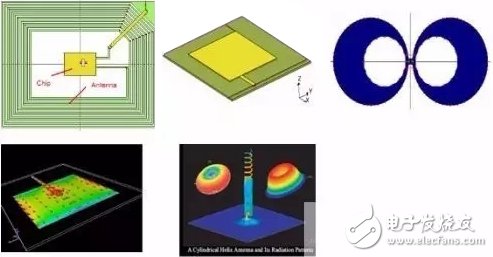
It is a high-frequency three-dimensional electromagnetic field simulation software developed by CST (Computer SimulaTIon Technology). Widely used in mobile communications, wireless communications (Bluetooth systems), signal integration and electromagnetic compatibility.
The MICROWAVE STUDIO is simple to use and provides intuitive electromagnetic characteristics for the user's high frequency design. In addition to the main time domain solver modules, MICROWAVE STUDIO provides eigenmode and frequency domain solver modules for specific applications.
The import of CAD files and the extraction of SPICE parameters enhance the design possibilities and shorten the design time. In addition, the MICROWAVE STUDIO's open architecture provides links to other simulation software, integrating MICROWAVE STUDIO with other design environments.

It is an electromagnetic simulation software based on moment method, which provides EDA tools for 3D planar high frequency circuit design system and design in microwave, millimeter wave field and electromagnetic compatibility/electromagnetic interference. SonnetTM is used in planar high frequency electromagnetic field analysis from 1MHz to several thousand GHz.
The main applications are: microstrip matching network, microstrip circuit, microstrip filter, strip line circuit, strip line filter, via (layer connection or ground), coupling line analysis, PCB board circuit analysis, PCB Board interference analysis, bridge-type spiral inductors, planar high-temperature superconducting circuit analysis, millimeter-wave integrated circuit (MMIC) design and analysis, hybrid-matched circuit analysis, HDI and LTCC conversion, accurate analysis of single or multi-layer transmission lines, Multi-layer planar circuit analysis, single or multi-layer planar antenna analysis, planar antenna array analysis, and analysis of planar coupling holes.
FEKOFEKO is the abbreviation of the German Feldberechnung bei Korpern mit beliebiger Oberflache (arbitrary complex electromagnetic field calculation).
This product is used for electromagnetic field analysis of 3D objects with complex shapes. FEKO is a professional electromagnetic field analysis software developed for antenna design, antenna layout and electromagnetic compatibility analysis. It is based on the strict electromagnetic field integral equation and is based on the classical method of MOM (Method Of Moment). The MLF (MulTI-Level Fast MulTIpole Method) algorithm greatly improves the computational efficiency while maintaining accuracy, and the method of moments and classical high-frequency analysis (physical optics PO: Physical OpTIcs, uniform diffraction The theoretical UTD: Uniform Theory of Diffraction is seamlessly integrated, making it ideal for analyzing electromagnetic field analysis problems in antenna design, radar cross section (RCS), open-area radiation, and electromagnetic compatibility.
The Feko version after 5.0 is a mixture of the FEM (Finite Element Method), which can more accurately deal with the problem of multi-layer dielectric (such as multilayer dielectric radome) and organism absorption rate. Feko usually deals with the problem: for electromagnetic fields such as antennas with small structures, FEKO uses a complete method of moments to ensure high accuracy. For structures with small electric and large electric sizes, FEKO can use high-efficiency multi-layer fast multipole method based on moment method, and decompose the problem and choose appropriate mixing method (such as using moment method, multi-layer Fast multi-level sub-analysis of small electrical components, and high-frequency analysis of the large-scale structural part), thus ensuring the perfect combination of high precision and high efficiency, so in the processing of large-scale problems such as antenna design, RCS calculation, etc., its speed And precision is unparalleled.
Using the above technical route, Feko can select different methods for different specific problems to carry out fast and accurate simulation analysis, making the application more flexible and applicable to a wider range. Breaking through a single numerical calculation method can only be limited to a certain type of electromagnetic problem. limits.
SHAOXING COLORBEE PLASTIC CO.,LTD , https://www.colorbeephoto.com